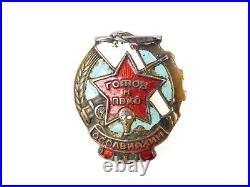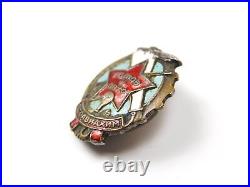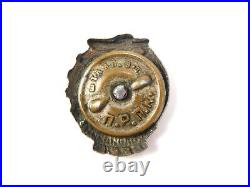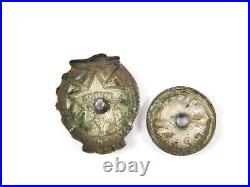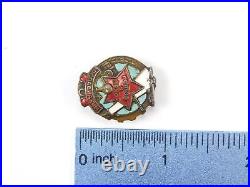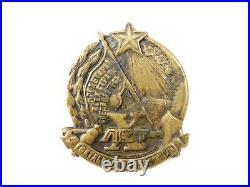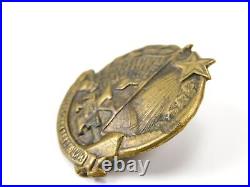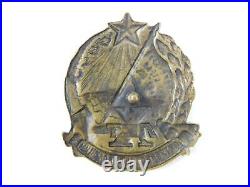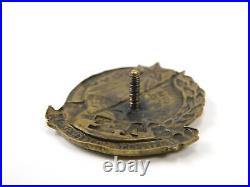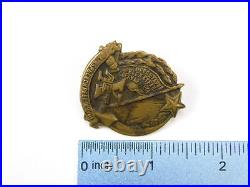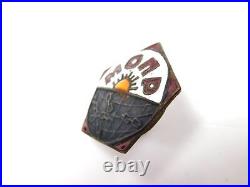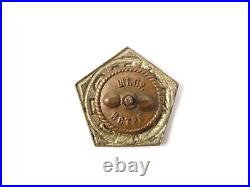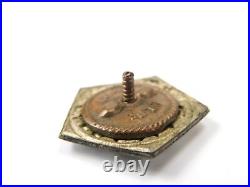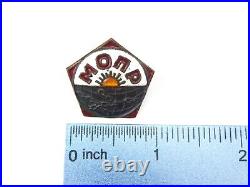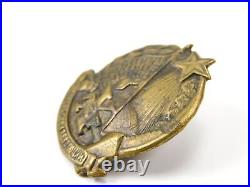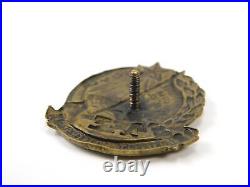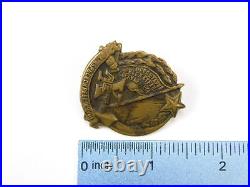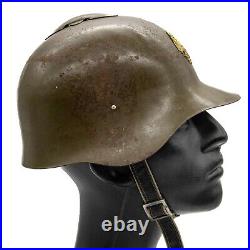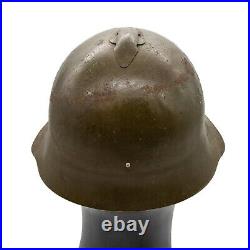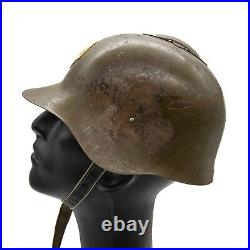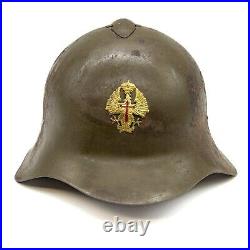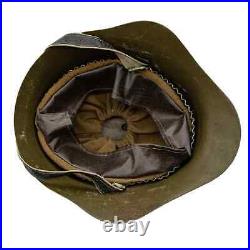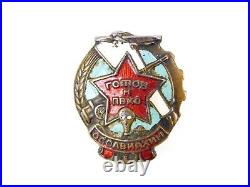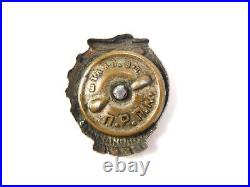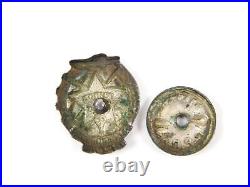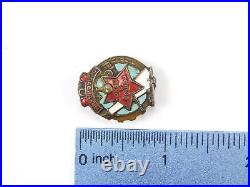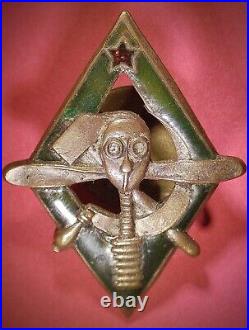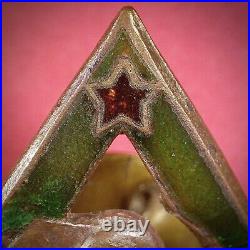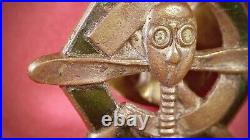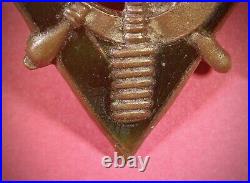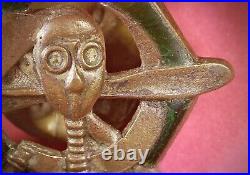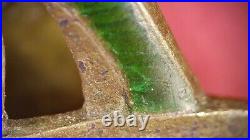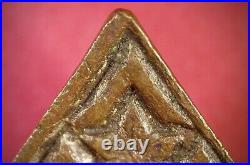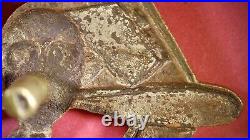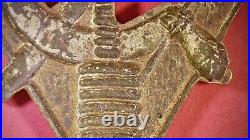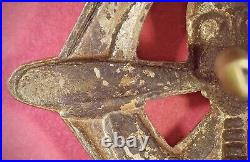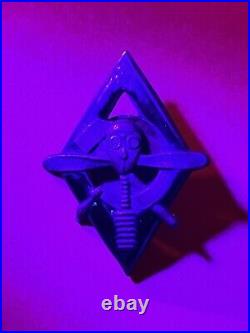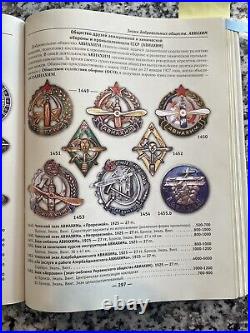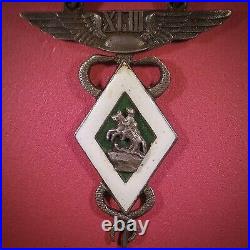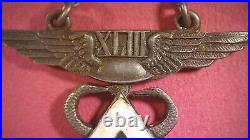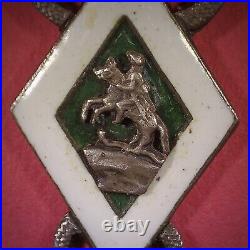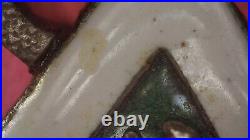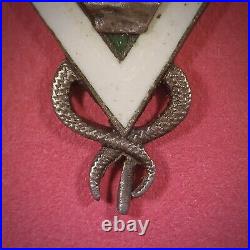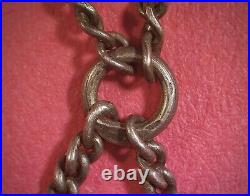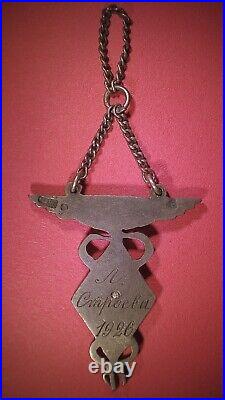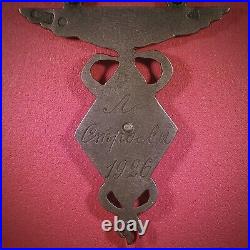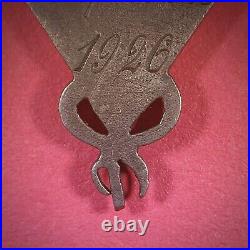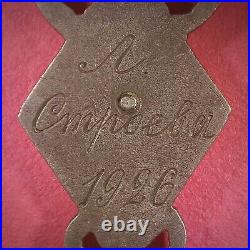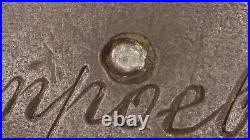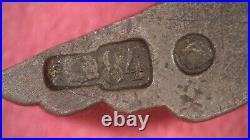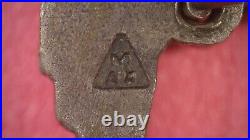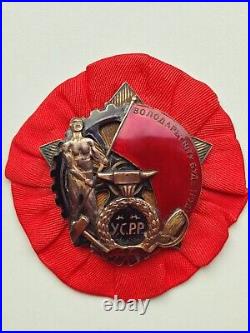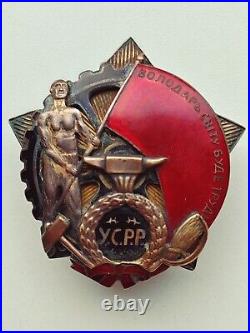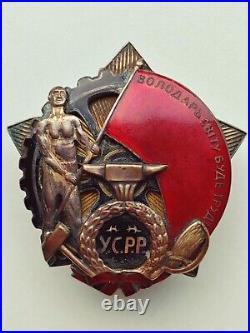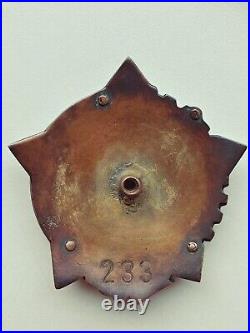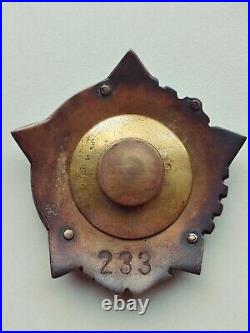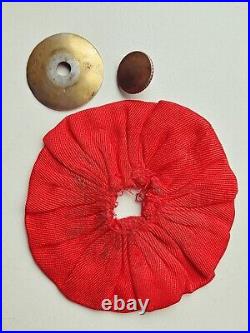
Soviet OSOAVIAKhIM Badge To the OKDVA Fighter 1930
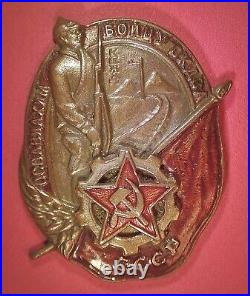
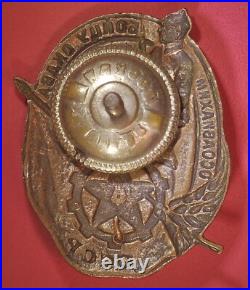
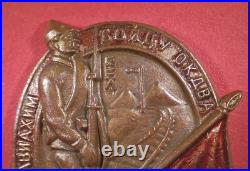
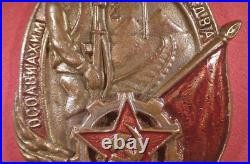
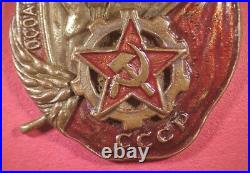
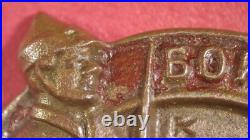
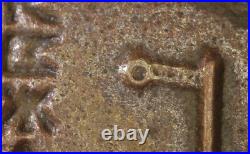

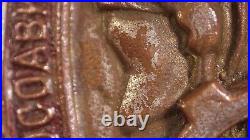
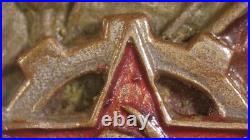
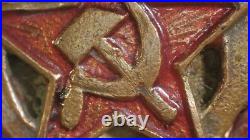

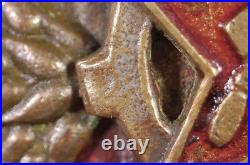
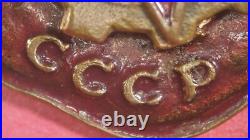
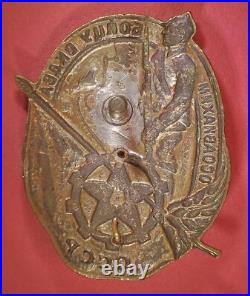
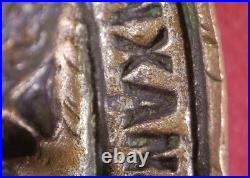
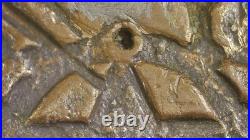

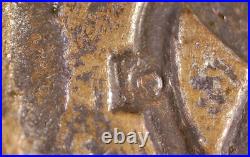

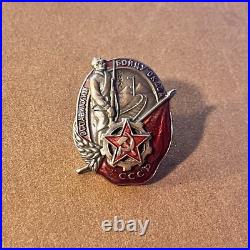
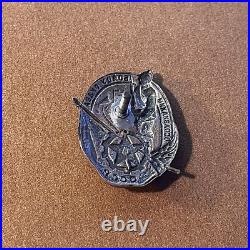

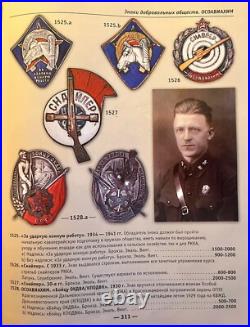

Soviet OSOAVIAKhIM Badge “To the OKDVA Fighter” 1930. Height (top of text to bottom of banner): 41.87mm. Width (middle center not including flag pole): 31.62mm. Weight (without screw plate): 13.320g. Screw plate diameter: 20.33mm. Screw plate weight: 4.064g. Screw post length: 13.41mm. The badge was awarded to distinguished soldiers of the Special Red Banner Far Eastern Army (OKDVA). It was established by the central council of Osoaviakhim in 1929 to reward participants in the conflict on the Chinese Eastern Railway. This badge is a striking piece of pre-WW2 Soviet history. It retains a decent amount of its original silvering as depicted in ABEPC 8 #1528. The enamel has been “restored” and is not original to the piece. Furthermore it also glows under an ultraviolet light (image attached) which an original would not. There is some minor surface pitting barely visible to the naked eye. I believe the screw post to have been replaced in the distant past and one of the wire through-prongs is missing which helps to hold the star/gear appliqué on. I believe this damage to have occurred during the supposed restoration efforts. The reverse of this piece shows excellent signs of age with some silvering present as well. Overall the details are sharp and it displays very well. It would be an excellent addition to any Soviet collection detailing the important events leading up to WW2. The Special Far Eastern Army, later the Special Red Banner Far Eastern Army Russian:???????????????????????????????????????????? (?????), romanized: Osóbaya Krasnoznamonnaya Dal’nevostóchnaya ármiya (OKDVA) was a military formation of the Red Army, active from 1929 to 1938 and under command of Vasily Blyukher. It was activated on 6 August 1929, originally with the 18th and 19th Rifle Corps assigned, in response to the Sino-Soviet border conflict regarding the ownership of the Chinese Eastern Railway. Following the Soviet victory in the Civil War the Soviet forces in the Far East became the Special Far Eastern Army of the Far Eastern Republic. Circa 1932 the 3rd Kholkoz Rifle Division OKDVA was established, and the 57th Rifle Division joined the army. The District was first briefly formed in 1935 from those forces, but then reverted to the title Special Red Banner Far Eastern Army (OKDVA), under Marshal of the Soviet Union Vasily Blyukher, while still functioning as a military district. [1] The Army became the Soviet Far East Front in June 1938, [2] after Blyukher’s torture and death at the hands of the NKVD during the Great Purge. It was reportedly disestablished on 30 June 1938. Reach out to me with any and all questions you have. All sales are final. Condition and authentication are “as seen”. Also, please be aware that this applies to declared value when relating to VAT as well (if applicable to your country).


